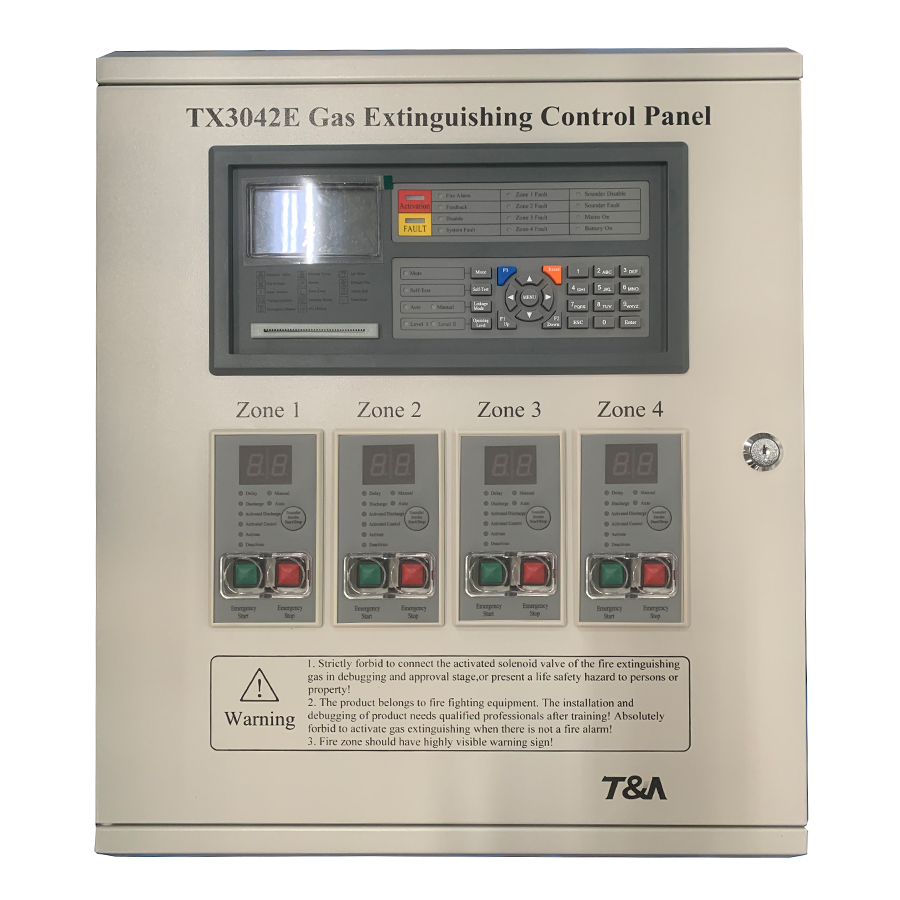Copyright © 2021 TANDA Development Pte. Ltd. All rights reserved.Privacy Policy.Site MapDesigned by

The discharge of gas-based fire suppressants, including FM200, CO2, and many others, is controlled by the gas extinguishing control panel, which is part of a fire suppression system.
All the controls and indications required for operating the system are found also on the control panel, which is normally placed close to the protected enclosure.
Activating and controlling gas-based fire suppression systems requires the use of a gas-extinguishing control panel. With respect to the model and producer, the operational principles of a gas extinguishing control panel can differ, but, the following concepts hold true:
The development of a conflagration in the system-designated area must be signaled to the control panel.
Typically, a manual pull station, a heat or smoke detector, or both will provide this signal.
The control panel normally sounds an alarm or emits a visual message when it senses a fire to warn nearby residents that the gas extinguishing agent will shortly be released to suppress the fire.

The control panel will start releasing the gas suppression agent into the enclosure just after the pre-emission alert.
This is often accomplished by releasing a valve or switch that regulates the gas flow.
The control panel will keep track of the pressures as well as other gas system characteristics after the gas has been discharged to make sure it is functioning efficiently.
The control panel will normally keep checking the system after the fire has been put out to make sure there are no leakage or other problems that might impede it from working correctly subsequently.
A gas extinguishing control panel's essential components are as follows:
All of the control panel's electrical components are housed in a protective container known as the enclosure.
The electrical supply supplies the voltage required to run the control center and the gas extinguishing device.
The control circuits are in charge of keeping track of the system sensors and managing how and when the gas suppression system is activated.
The detecting circuits incorporate different kinds of fire-detection sensors, including temperature sensors, smoke alarms, and heat detectors.
These circuits trigger the gas suppression system, which then releases the gas extinguishing agent into the safe area.
A shared pool of configurable computing interfaces can be used to wirelessly regulate and manage certain Gas Extinguishing control panels.
Generally, the Gas Extinguishing control panel is essential to ensure that a gas-based fire - extinguishing system is operating properly and providing sufficient fire protection for its designated area.
We offer a range of monitoring and alerting tools for installing and maintaining fire suppression systems, including gas extinguishing control panels, and water flow detection systems amongst others.
Get in touch with us if you require a conventional gas extinguishing control panel for your fire alarm system or if you have questions about any of our products.